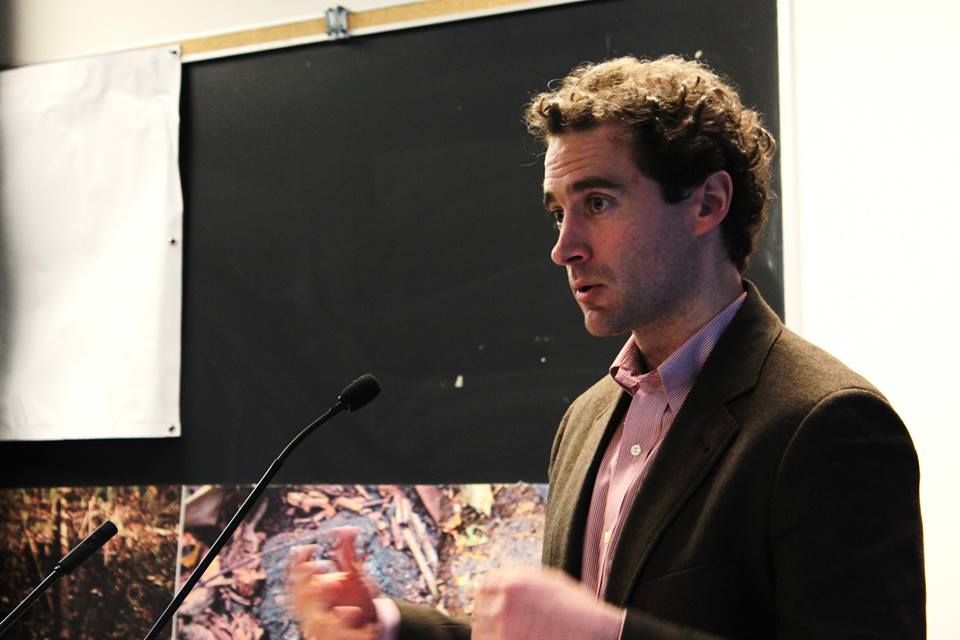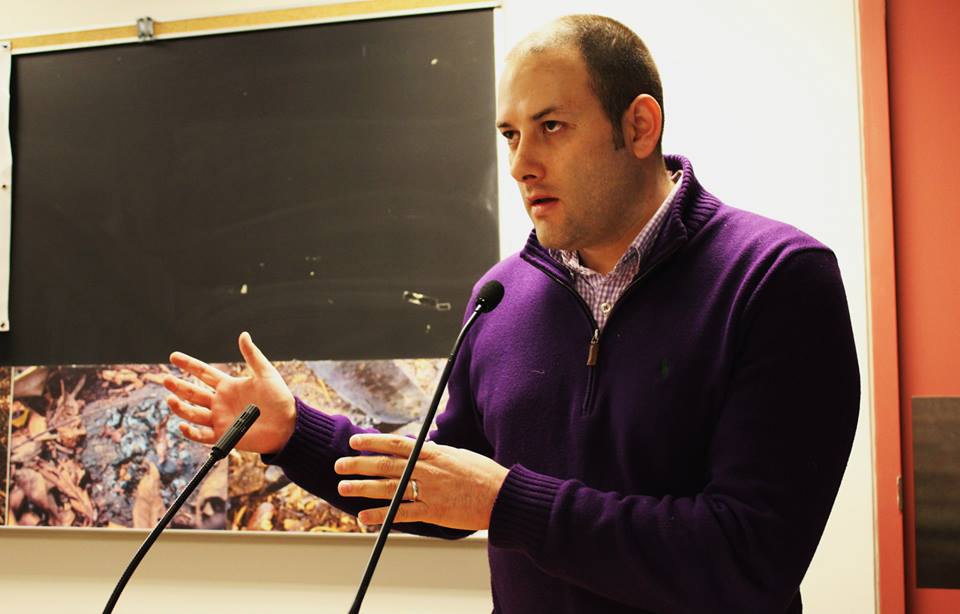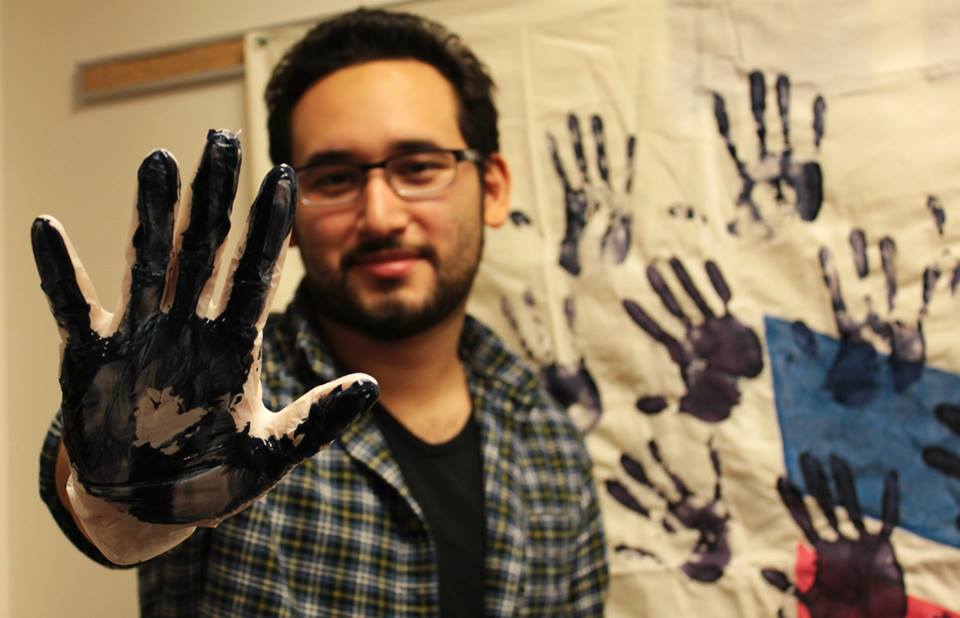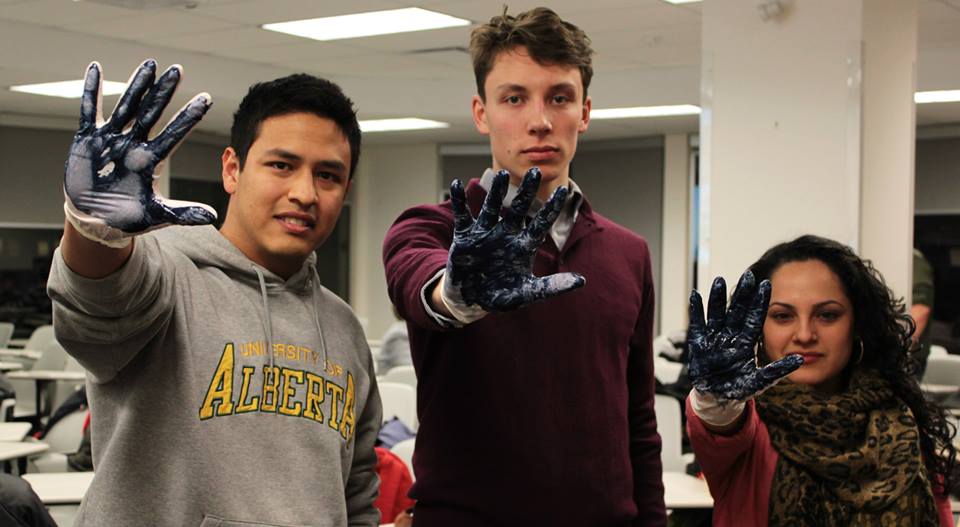by Pragash Pio and Denise Cordova
On March 13, 2014, the Committee in solidarity with those affected by Chevron in Ecuador organized a forum “Exposing the Dirty Hand of Chevron,” as a part of a wider awareness campaign.
For the past 20 years Ecuadorian indigenous and peasant communities have been fighting a legal battle against the oil giant Chevron for what is the largest environmental oil-related crime of our time that has been left behind in the Ecuadorian rainforest. In 2012 Chevron was sentenced to pay damages of US$ 9.5 billion. However, the corporation no longer has any assets in Ecuador to be seized.
Therefore, in order to enforce the Ecuadorian judgment to indemnify and compensate the victims and survivors of the contamination left in Ecuador by Chevron, the Court of Appeal for Ontario ruled in December 2013 that Ecuadorian indigenous communities have the right to pursue all of Chevron’s assets in Canada.
Justice James MacPherson of the Court of Appeal for Ontario said that: “Chevron’s wish is granted. After all these years, the Ecuadorian plaintiffs deserve to have the recognition and enforcement of the Ecuadorian judgment heard on the merits in the appropriate jurisdiction. At this juncture, Ontario is that jurisdiction.”
Given that the legal battle against Chevron now continues here in Canada, several organizations and collectives in Toronto saw the need to create a Solidarity Network with the affected communities in Ecuador by Chevron.
During their initial meeting , held on January 16, 2014, they gathered to denounce the pollution that Chevron left in Ecuador and the serious impact this has had on the health of the indigenous and peasants living in the Ecuadorian Amazon. Participants also expressed their support in the struggle of the Ecuadorian government of President Rafael Correa to win a measure of justice in the courts and media against the powerful U.S. Corporation.
“How can it be possible that Chevron, colluding with a private arbitration centre, wants to make the Ecuadorian government responsible for paying the judgment of US$9.5 billion to the affected communities?” asked Janis Mills, a Canadian academic and activist.
In an effort to create awareness in Canada around this issue, the committee has organized various screenings, events and information series.
Nicole Oliver, who participated at one of these events, noted that “The battle against oil corporations is also happening here in Canada. For example, theUnist’ot’en are currently battling against Chevron and other companies in resistance to the Pacific Trails’ Pipeline in northern B.C. over unceded Wet’suwet’en territory.” Oliver also stressed that “we think that peoples from Canada and Ecuador have similar problems, in many cases, facing the same threats, such as corporations and Canadian companies, that put profit first over the common good. In this context we think that affected communities can learn and support each other beyond borders.”

Brendan Morrison, Canadian lawyer representing the victims of Chevron in Canada. CAMILA URIBE-ROSALES, BASICS.
On March 13th, 2014 a forum was held at the University of Toronto with Brendan Morrison, Canadian lawyer representing the victims of Chevron in Canada, and Santiago Escobar, a human rights activist who has exposed and denounced the crimes of Chevron in the courts of both Ecuador and North America.
The forum began with the screening of a documentary on the crimes of Chevron, describing the hard evidence being used to legally challenge and sue the U.S. corporation for its chemical pollution. The screening described how Chevron’s pollution was the source of the rising epidemic of cancer and other health-related issues appearing for the first time throughout the Ecuadorian rain forest.
Brendan Morrison gave an overview of the legal battle during which he quoted Chevron’s spokesman’s declaration that the oil corporation “will fight [any legal challenge] until hell freezes over” and then “fight it out on the ice”.
“Chevron keeps refusing to accept responsibility for the environmental damage caused in the Ecuadorian Amazon, which as a result has generated high levels of cancer, abortions and various health problems among people living in areas contaminated by Chevron. It is time for this corporation to take responsibility,” said Toronto activist, Megan Kinch.
Santiago Escobar showed further fraud with proof of payments made by Chevron to Borja Diego Sanchez (known as “Chevron’s dirty tricks guy”) describing the collusion between the two. According to documents from Chevron, which emerged during Borja’s deposition in the U.S., Borja received over two million dollars in support to create propaganda for Chevron; ranging from use and payment of Chevron’s attorneys; a salary of ten thousand dollars; funding for his travels, among other various expenses.

Santiago Escobar a Human Rights activist who has denounced the crimes of Chevron. CAMILA URIBE-ROSALES, BASICS.
“Chevron’s dirty tricks guy” first became known in September 2009, when Chevron used some videos he produced in which among other things, he created the impression that the judge proceeding the legal case of the affected communities against Chevron was being bribed. Chevron used these videos to accuse the government of Ecuador of inventing a false legal case for political reasons.
The forum came to an end with a photo exhibition documenting environmental damage caused by Chevron. All the participants created hand prints with black paint on canvas as a symbolic protest against Chevrons’ poisoning of the Ecuadorian Amazon.
On March 18th, at the University of Toronto, the Youth Communist League organized a Forum on Ecuador vs. Chevron, and Report-back from the World Festival of Youth and Students that was held last December 2013 in Quito, Ecuador.
Currently, several organizations and alliances in Canada are backing the Indigenous plaintiffs in Ecuador, including the Canadian and Quebec sections of the International League of People’s Struggles ; the Hugo Chavez People’s Defense Front ; La Red de Amigos de la Revolución Ciudadana ; Hispanic Centre of York and Barrio Nuevo .
The Committee in Solidarity with those Affected by Chevron in Ecuador is comprised of people committed to social and environmental justice. If you want to join the cause, write to: [email protected] or follow them on : www.facebook.com/chevronsdirtyhand – https://twitter.com/chevronsdirty
International #antichevron Day! #May21 . Endorse the Chevron’s Dirty Hand campaign today by emailing [email protected]!!!
Comments

